A high-voltage wire destroyed his face. Doctors just gave him a new one.
Aaron James was working as a high-voltage lineman in June 2021, when his face touched a live wire.
Seventy-two hundred volts of electricity coursed through his body, costing him his left eye and much of the arm that reached up to try to protect it. It also burned his nose, lips, cheek and chin down to the bone.
Badly disfigured, the military veteran from Hot Springs, Arkansas, couldn't taste, smell, or eat solid foods.
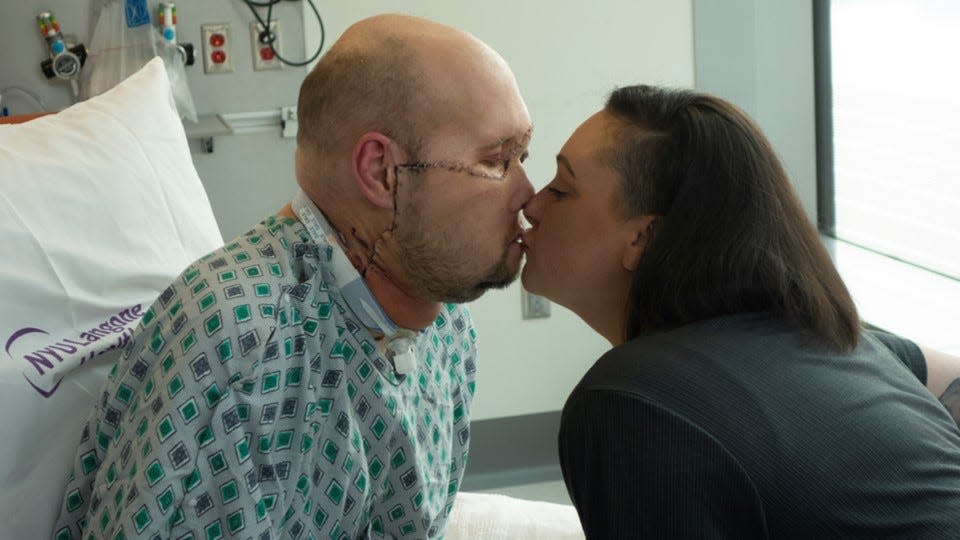
In May, James, now 46, underwent surgery at NYU Langone Health to replace the tissue on his face and give him a new left eye.
More than 45 people have received a face transplant worldwide since 2021, but James is the first to receive an eye along with a new face.
It's not yet clear whether the new eye, which comes from the same donor as the rest of the face, will ever allow him to see, but it appears to be healthy so far. The team hoped that the transplant would provide a cosmetic improvement and that the eye might work.
On Thursday, James and his doctors shared his story publically for the first time. They talked about his injury, his donor and the efforts to give him back a normal life.
James said the surgery helped restore his self-confidence.
"Since the transplant, I tell people I can't walk past a mirror without looking at it," James told reporters. "It has made me stand up taller."
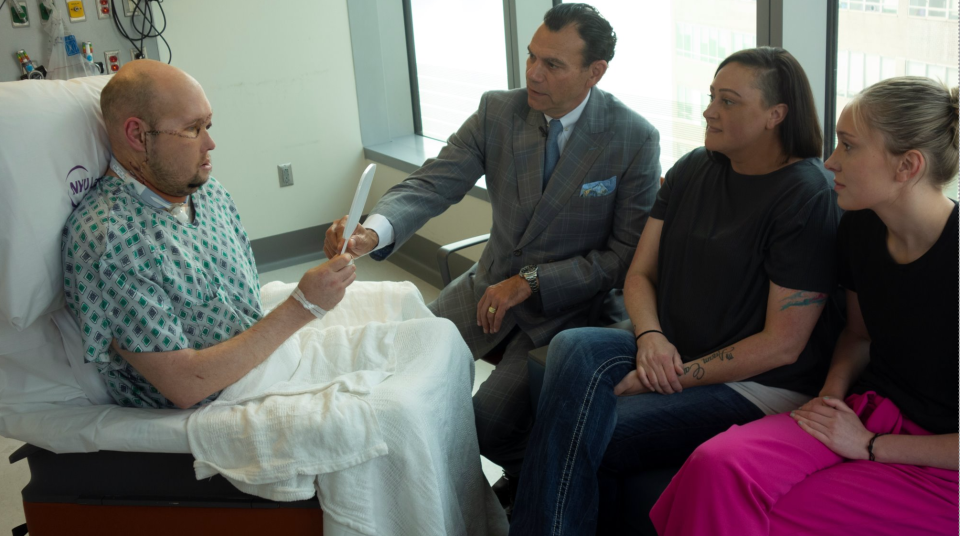
Five months after the surgery, James is healing well, said Dr. Eduardo Rodriguez, director of the Face Transplant Program and chair of the Hansjörg Wyss Department of Plastic Surgery at NYU Langone, who led the process.
He can't see out of the transplanted eye yet and may never, but he can eat, smell and taste again, speak more normally and is no longer hooked up to tubes or machines.
The surgery began May 27 at 9:14 a.m. and finished 21 hours later, at 7:51 a.m. on May 28, over Memorial Day weekend. It included a 14-person medical team working across two operating rooms and followed 15 full-scale rehearsals over three months, including 3D-printed replicas of James' anatomy to help the team understand what they needed to do.
Rodriguez credited the team's success to their months of planning and dedication and to James' personality and his family's unwavering support.
"Aaron is not a guy you're going to keep down. He's a fighter," Rodriguez said.
Serious risks involved
Rodriguez, who performed his first face transplant in 2012, said he chooses candidates carefully, because of the riskiness of the procedure and the extreme emotional toll of this type of injury and surgical recovery. He can't promise them they will survive the surgery or how long they will live after.
"I tell these patients, 'You will basically live 10 years. Is it worth the risk?'" Rodriguez said, explaining that transplant medications are known to cause life-limiting organ damage. That first patient from 2012 is still doing well, though, he said, so "we don't know the exact timeline or longevity of face transplants."
Eye transplants had been considered too risky because of the medications, the chance a transplant could cause a brain infection and the low expectation of success.
But James would need the medication to protect his new face, even if the new eye didn't work, so there was little added risk of including the eye, Rodriguez said.
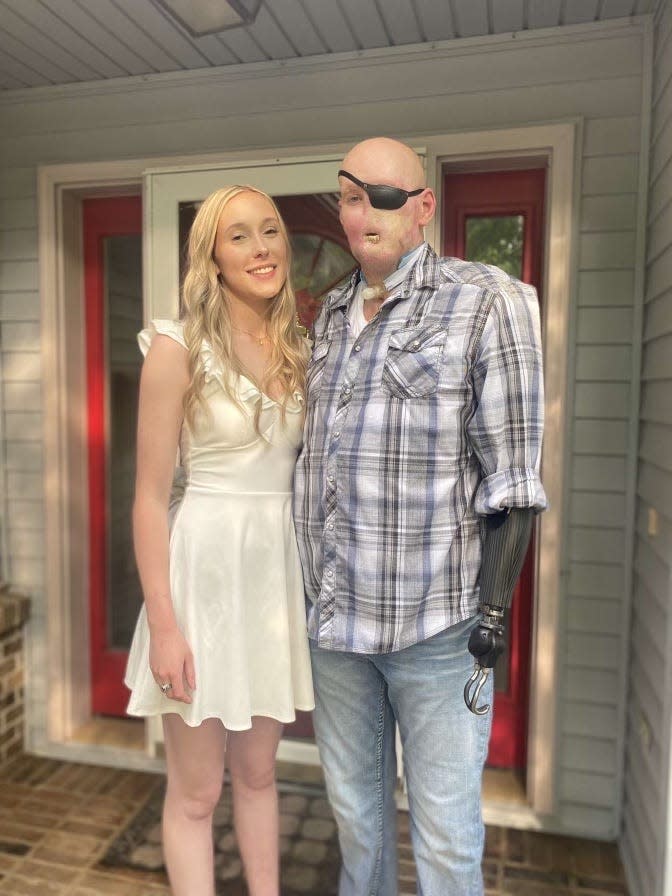
At first, the expectation was just that the donor eye would help restore James to a more typical appearance. But as doctors began considering his case, they wondered if they might be able to get it to work again, too, Rodriguez said.
Historically, eyes have been considered too challenging to transplant, because of the risks of immune rejection, and the need for the newly implanted eye to regenerate nerves and blood flow to the retina.
The results so far have exceeded their expectations and are "incredibly surprising," he said. "We've got an eye that's alive and an eye connected to the optic nerve, which is a direct connection to the brain."
Although James' initial care following the injury was in Texas, the NYU team was involved early enough that when his eye was removed, they recommended cutting the optic nerve as close to the eyeball as possible to preserve nerve length and maximize options for later reconstruction.
Nerves grow slowly, so it is still conceivable that the optic nerve in the new eye could connect to James' brain and begin sending signals. Doctors admitted the surgery is so novel that they don't know when or whether that will happen.
Blood is flowing to the new retina ‒ the area at the back of the eye that receives light and sends images to the brain ‒ a sign the eye is healthy, Dr. Vaidehi Dedania, the ophthalmologist who led that part of the procedure, said at the news conference. The cornea is also connected and looks normal, she said.
“Going into this case, I was hopeful the eye would survive 90 days at the very most," Dr. Bruce Gelb, a transplant surgeon at the NYU Langone Transplant Institute and vice chair of quality in surgery, said in a statement. "But the fact at five months out (that) we have a viable cornea paired with a retina showing great blood flow, I think we’ve already hit a home run.”
“Anything above that is exceptional and any additional recovery from the eye will be unexpected and exciting to see," he said. "It’s like us witnessing a supernova. We will continue to monitor and learn more over time.”
James is blue-eyed, while the donor eye is brown. He can't yet control the eyelid over the new eye, though he has recently begun to be able to squint, which other face transplant recipients have not been able to do.
He said the eye color difference doesn't bother him at all: "It could be pink and I wouldn't care."
Even if he is never able to see out of that eye, Rodriguez said the success so far is a "total game changer."
Previously, doctors have been able to reconnect nerves in the so-called peripheral nervous system, which includes the limbs and face, but not in the central nervous system, which is why spinal cord injuries have been considered irreversible.
The success with James changes that assumption, Rodriguez said.
"We've crossed into the frontier of the central nervous system," he said. "I think the options are limitless."
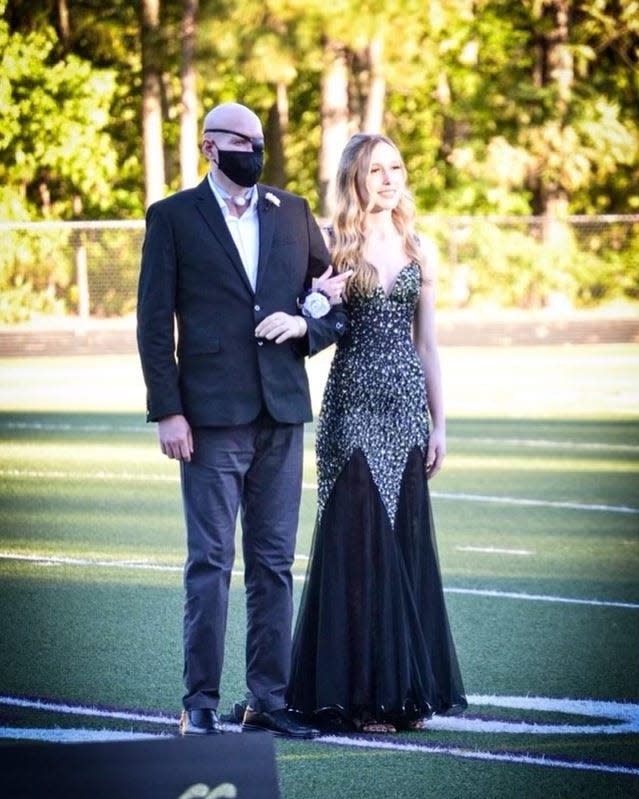
Depending on the generosity of another
The donor was a man in his 30s, who came from a family that strongly supports organ donation, said Leonard Achan, president and CEO of LiveOnNY, which led the effort to find a donor for James.
The man, whose cause of death and name have not been identified, also donated his kidneys, liver and pancreas, saving three other people between the ages of 20 and 70, Achan said in a statement.
In addition to the whole left eye and eye socket, James received from the donor the tissue that covered his nose, left upper and lower eyelids, left eyebrow, upper and lower lips, skull, cheek, nasal and chin bone segments, and tissues below the right eye including the underlying muscles, blood vessels and nerves.
The beard James sports comes from the donor, too.
He also received cells from the donor's bone marrow, withdrawn from the man's pelvis, that doctors hope will help James' optic nerve to repair and connect to the donor eye.
The deceased man's face was replaced with a 3D-printed replica after the transplant. Rodriguez said this enabled the donor's family to follow their traditional burial rituals.
James has not met the donor family, but hopes to someday.
Rodriguez, who has met the family, described them as "incredibly kind and generous," and he noted that "they didn't hesitate at all to help out Aaron and other patients whose lives they changed."
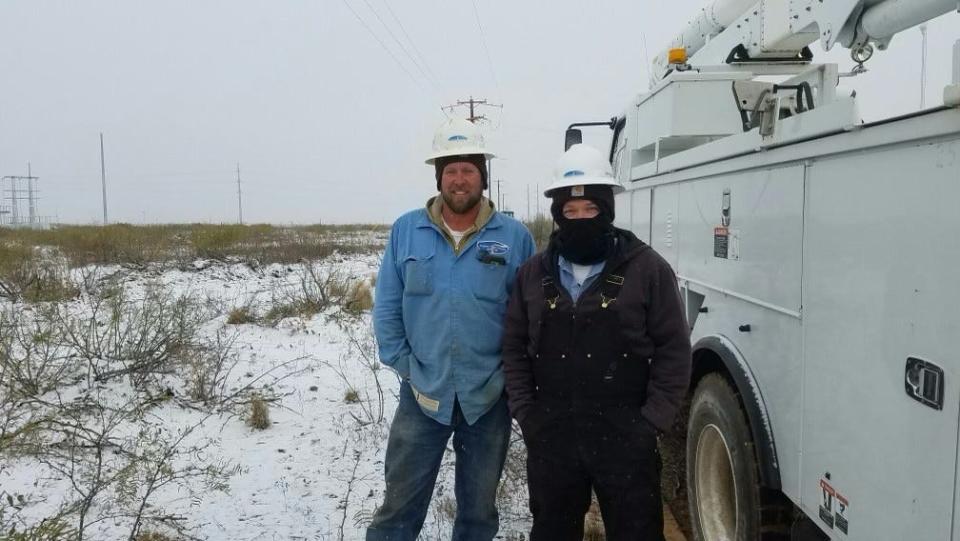
Moving on with life
James, an Army veteran who served three tours of duty in the Middle East, said he has no memory of the accident that nearly cost him his life, or of that day at all.
Everything has been different since.
The experience "sucked," but it made him incredibly grateful for his family and friends, who have stood by him. When he offered to let his wife Meagan out of their 20-year marriage, she wouldn't hear of it. "She said, 'No, we're in this to the end."
James said he's now focused on his recovery and not thinking too far ahead.
"You get through one day and thank God for the next. That's all you can do right now," he said. "I think I'm done worrying about too far in the future. We're not going for the piece of paper saying, 'You're going to live to be 80 years old.'"
Rodriguez admitted he was anxious the day he unveiled James' new face to him for the first time ‒ but thrilled by his reaction. "It was very difficult to have a dry eye in that room."
The surgeon praised James and his family for their energy and dedication to his recovery.
"As long as he takes care of that face, I think he will have a great life moving forward," Rodriguez said.
Contact Karen Weintraub at kweintraub@usatoday.com.
Health and patient safety coverage at USA TODAY is made possible in part by a grant from the Masimo Foundation for Ethics, Innovation and Competition in Healthcare. The Masimo Foundation does not provide editorial input.
This article originally appeared on USA TODAY: Man receives face and eye transplant after high-voltage wire accident

